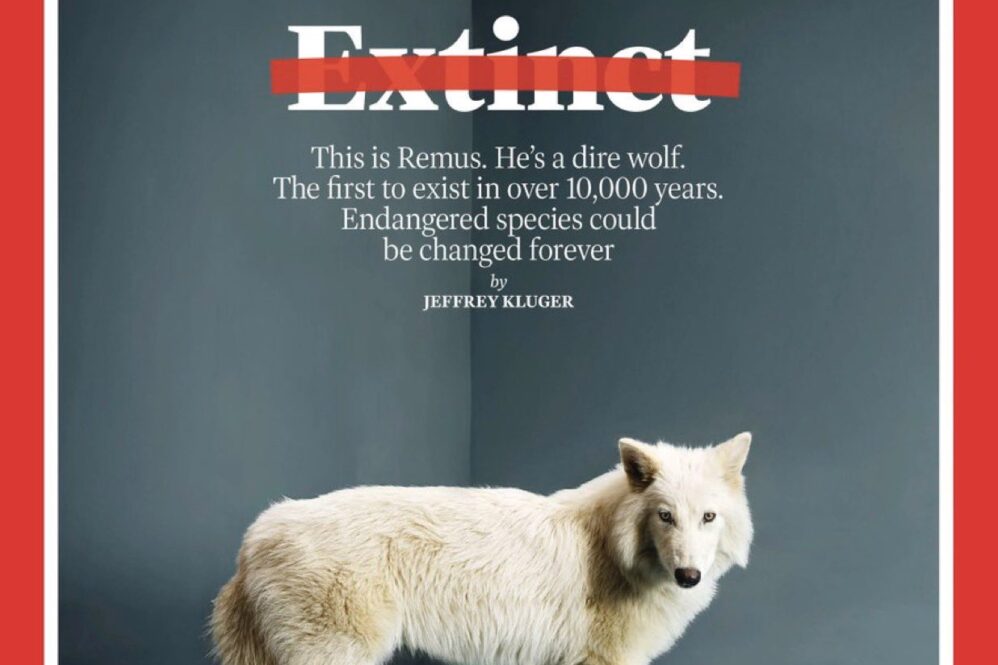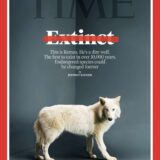In a stunning leap for modern science, researchers have successfully resurrected the dire wolf, a species that vanished over 10,000 years ago, marking a historic milestone in genetics and de-extinction.
The breakthrough was revealed today in a TIME Magazine exclusive, which featured the first official image of the animal—a two-month-old pup named Khaleesi—on its cover. Described as “the she-wolf from the legend of Romulus and Remus,” Khaleesi represents the first living dire wolf of the modern age, born through cutting-edge DNA reconstruction and synthetic biology.
According to scientists at Colossal Biosciences, the team behind the project, the process began with the recovery and analysis of well-preserved dire wolf DNA from fossil remains. Using advanced genome editing tools, they re-engineered the DNA of the common gray wolf to match that of the extinct predator. The embryos were then implanted into domestic dogs, chosen for their genetic compatibility and reproductive success.
The result: the successful birth of Khaleesi, a healthy dire wolf pup with the ancient genetic blueprint of her Ice Age ancestors.
The exact location of the facility where Khaleesi was born remains undisclosed for security and ethical reasons. However, TIME journalists were granted rare access to document the pup’s early days, capturing images of what may become one of the most iconic animals of the 21st century.
The dire wolf, larger and more muscular than today’s gray wolves, once roamed North and South America. It gained pop culture fame through shows like Game of Thrones, but until now, it remained only a relic of the past.
Colossal, known for its ambitious efforts to de-extinct species like the woolly mammoth, says this development ushers in a new era of science—one where extinct animals can be returned to life using advanced genomic technology.
“This is more than just bringing back an ancient species,” a Colossal spokesperson said. “It’s about unlocking the future of conservation, ecosystem restoration, and understanding the boundaries of life itself.”
Public reaction has been swift and intense, with debates already emerging around the ethics of de-extinction, animal welfare, and the potential environmental impact of reintroducing long-lost predators. Still, many hail the birth of Khaleesi as a defining moment in human history—a bold fusion of past and future.
With the successful revival of the dire wolf, the world watches in anticipation: what—or who—will science bring back next?










